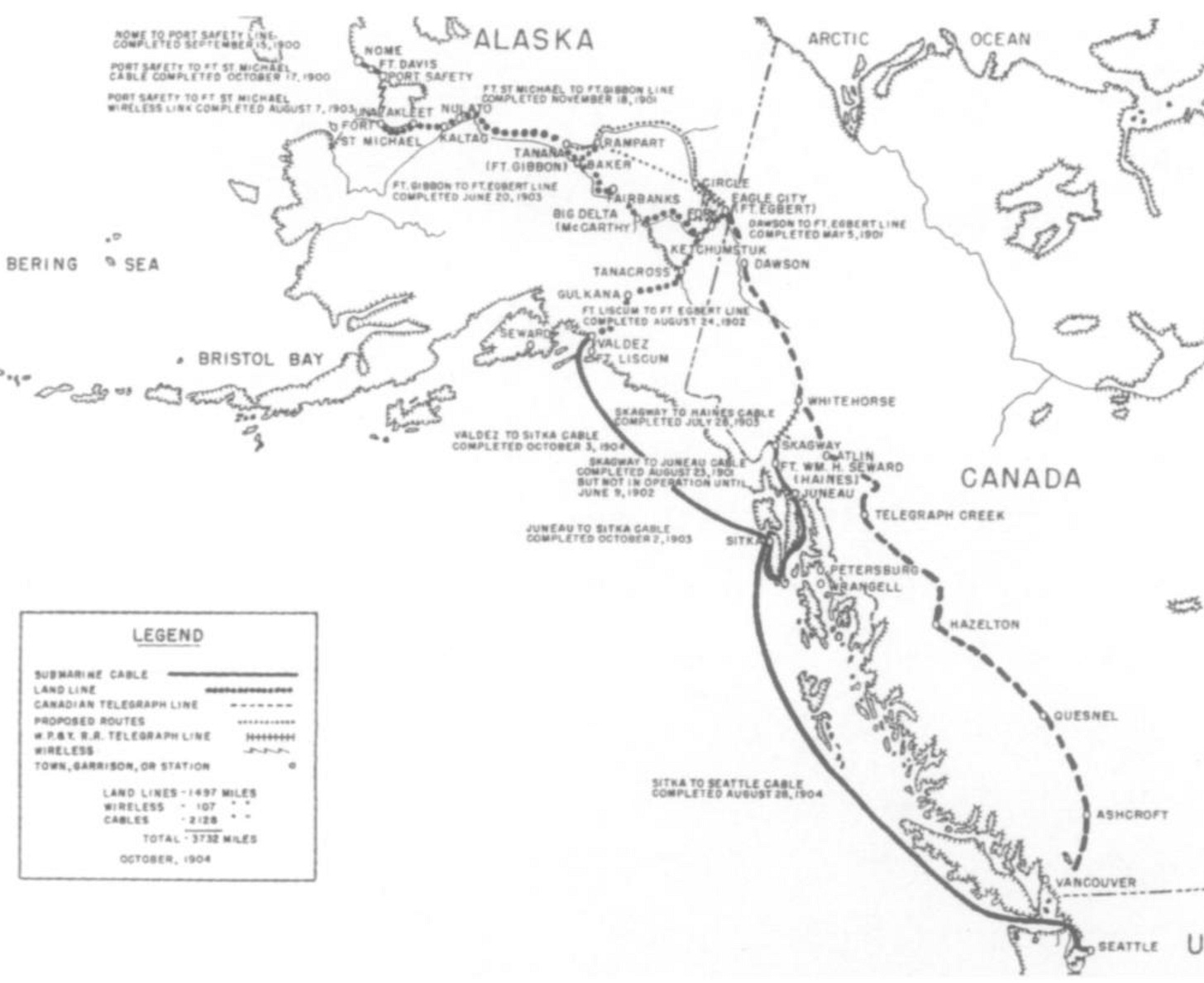As an urban researcher, one of my most exciting “discoveries” over the years was the underground building at Pigeon Point, the ridge that comprises the east side of West Seattle. I first heard about it when I was putting together a walk for my Seattle Walks book. Someone had told me about a facility or building on Pigeon Point where they (whoever they was) had spied on the Japanese in World War II or conducted some sort of weird animal experiments. When I began asking around, I heard hints and tidbits, rumors and rumblings, scuttlebutt and speculation, so I did what I often do, I headed to the archives to find the truth.
At Special Collections at the University of Washington and the National Archives on Sand Point Way NE. I found documents that enabled me to piece together a story that not only confirmed the hearsay but made the truth even more interesting than I suspected.

In 1900, the U.S. Army’s Signal Corps began an ambitious project to establish a network of isolated outposts across Alaska, all linked via telegraph lines. The ultimate goal was to connect Alaska to the United States (Alaska wasn’t a state then) through a transmitter base in Seattle. Known as the Washington Alaska Military Cable and Telegraph System (WAMCATS), it consisted of 1,497 miles of telegraph wires and 2,128 miles of oceanic cable (the copper conductor in the cable weighed 130 pounds/mile). It was completed in late 1904 and was heralded as one of “the greatest feats of electrical engineering the world has seen,” at least in the Seattle newspapers.

Jump forward to World War II, when the US War Department decided it needed bomb-proof radio facilities in Seattle for the Alaska Communication System (WAMCATS became ACS in 1936) to handle essential wartime information about the north and points further west. Work began in West Seattle at Pigeon Point in 1942 and transmissions started in 1943. The site eventually totaled 44 acres and consisted of several tuning huts, housing, a five-car garage, and the concrete transmitter building. Built underground so it would be less vulnerable to attack, the bomb-proof structure had four-foot thick walls covered by a nine-foot thick detonation slab of reinforced concrete.


Following the war, use of the facility waned until the US Government decided to sell the property. The University of Washington bought it in 1958 to use for antenna and radio science research and later for cosmic ray studies and oncology experiments. Taking advantage of the bomb-proof, and apparently radiation proof, underground building, oncology researcher E. Donnall Thomas irradiated dogs that had lymphoma with cobalt 60 to help understand why bone marrow transplants typically failed. His work with dogs (mostly pets, which had been referred to Thomas and his colleagues) continued with humans, who were irradiated and then transferred from Pigeon Point across town to what was the US Public Health Service Hospital (aka Marine Hospital, Pac-Med Building). The work was so successful that Dr. Thomas won the Nobel Prize for Physiology or Medicine in 1990 for his work on bone marrow transplantation research.
By the time Thomas had won the award, the UW had abandoned the bunker and the surrounding acreage and the Seattle Parks Department and Seattle Schools acquired the land and facility in 1998. It is now the home of Puget Park and the Pathfinder K-8 school. On the 1998 plans to build the school, then designated as Cooper Elementary, there is a note reading “Underground Research Lab to Remain,” with no additional explanation. The subterranean facility is still there, located, as you can see below, at the north end of the entry road in front of the school. There is no entrance to the bunker and no sign to indicate the story hidden beneath.

Subscriptions - Wow, hard to believe that it’s nigh unto July. Two of my highlights of the past six months has been writing these newsletters and the kind responses that people have sent in. I am still having fun with them and look forward to what the next six months brings. My weekly newsletter will continue to be free with an option to contribute as a paid subscriber. If you feel inclined to do so, I would sincerely appreciate it. You can become a free or a paid subscriber via this button.
Word of the Week - Pigeon - An Anglo-Norman word in reference to a young bird. The origin of the name Pigeon Point is clouded in the shrouds (if that’s physically possible) of time. It could, but probably doesn’t, refer to band-tailed pigeons (Patagioenas faciata), which are migratory birds of wet forests that visited but probably did not reside in this area; or to feral pigeons (aka rock dove), which probably arrived here soon after the first European settlers. In Arthur Denny’s granddaughter Sophie Frye Bass’s When Seattle Was A Village, she wrote “A long time ago, when Seattle was young and mud flats extended from Yesler’s Mill to Duwamish Head…on a promotory, wild pigeons roosted on Pigeon Point.”




Much later comment, do you know if it's possible to tour the bunker at all?
Wow, fantastic story! I was aware the UW had used a bunker in West Seattle for early hematology research / early treatment (I received a bone marrow transplant in 2010 at Seattle Cancer Care Alliance and have looked into transplant history) but was not aware of how the bunker came to be there. Crazy to think it is still there! Also, have wondered how Pigeon Point got the name.